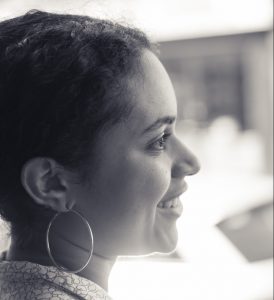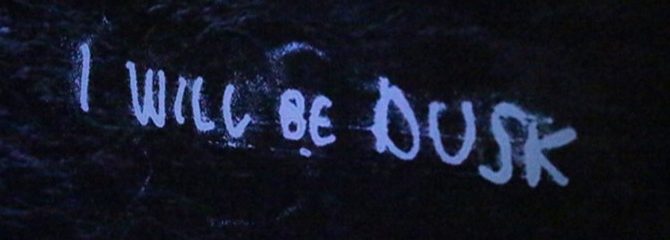
Above: Effie Crompton. Photography: Tunde Euba
As humans we have an instinctive desire to be accepted – even when this means remoulding ourselves to fit into various groups. This could be simply modifying our speech, presentation or mannerisms and, in some extreme cases, our physical appearance.
This is a common experience for people growing up mixed race, belonging to more than one ethnicity or community. Having gone through this myself, I got to a stage that I didn’t even want to think about my race. Constantly monitoring myself was draining and exhausting, and what’s more, it was unhealthy. I didn’t want my behaviour and personality to be affected by how I assumed I was meant to act.
However, forgetting about my skin colour as an ethnic minority is easier said than done, because every time I step outside I am reminded of my difference, even in the diverse haven of London.
This brought about the exhibition’s name and notion, Hiding Place. I located it in the cool dark basement of Brixton Pound Cafe, a place of refuge, hidden from the outside world and therefore free of worries about its perceptions.
Hiding Place provided therapeutic reflection on human behaviours – particularly those of changing to blend in. Running throughout the day was a continuous animation showing a figure morphing and transitioning into different things, to mimic this shape-shifting theme.

Accompanying this on the walls were a series of photographs containing text such as “if I can’t be ice and I can’t be mist I will be water”, “If I can’t be day and I can’t be night I will be dusk”. These were essentially words of acceptance. An acknowledgement that it’s okay not to perfectly belong to every group and that in fact, your uniqueness is something beautiful and worth celebrating in itself, just as how “dusk” – while neither really day nor night – is in itself a beautiful time of the day.
What really made the event so fulfilling and engaging were the people who visited Hiding Place and the natural conversations that arose. Many unique and personal angles were shared in casual conversation, which made it such an enriching experience for me as the person who put it together. I learnt such a lot from them.

One woman was African American and Korean, and had experienced difficulty being fully accepted into her Korean family because of her difference in appearance. Another woman was a therapist who specialises in working with people suffering difficulties experienced in childhood. Because the theme of Hiding Place addresses an issue many people go through whilst growing up, the show very much resonated with her. There was another woman whose identity was confused by the Brexit vote. As a European immigrant she had considered Britain her home for many years, as well as the birthplace of her children. However, she no longer felt as accepted and was unsure of her family’s future.
Seeing how many people connected with Hiding Place demonstrated just how common this crisis of identity is, and also made me (as a person who has experienced this) feel like I’m not the only one. I hope the people who visited Hiding Place felt the same too.
